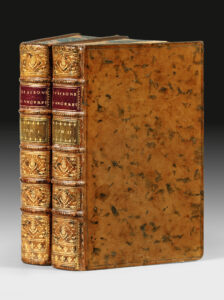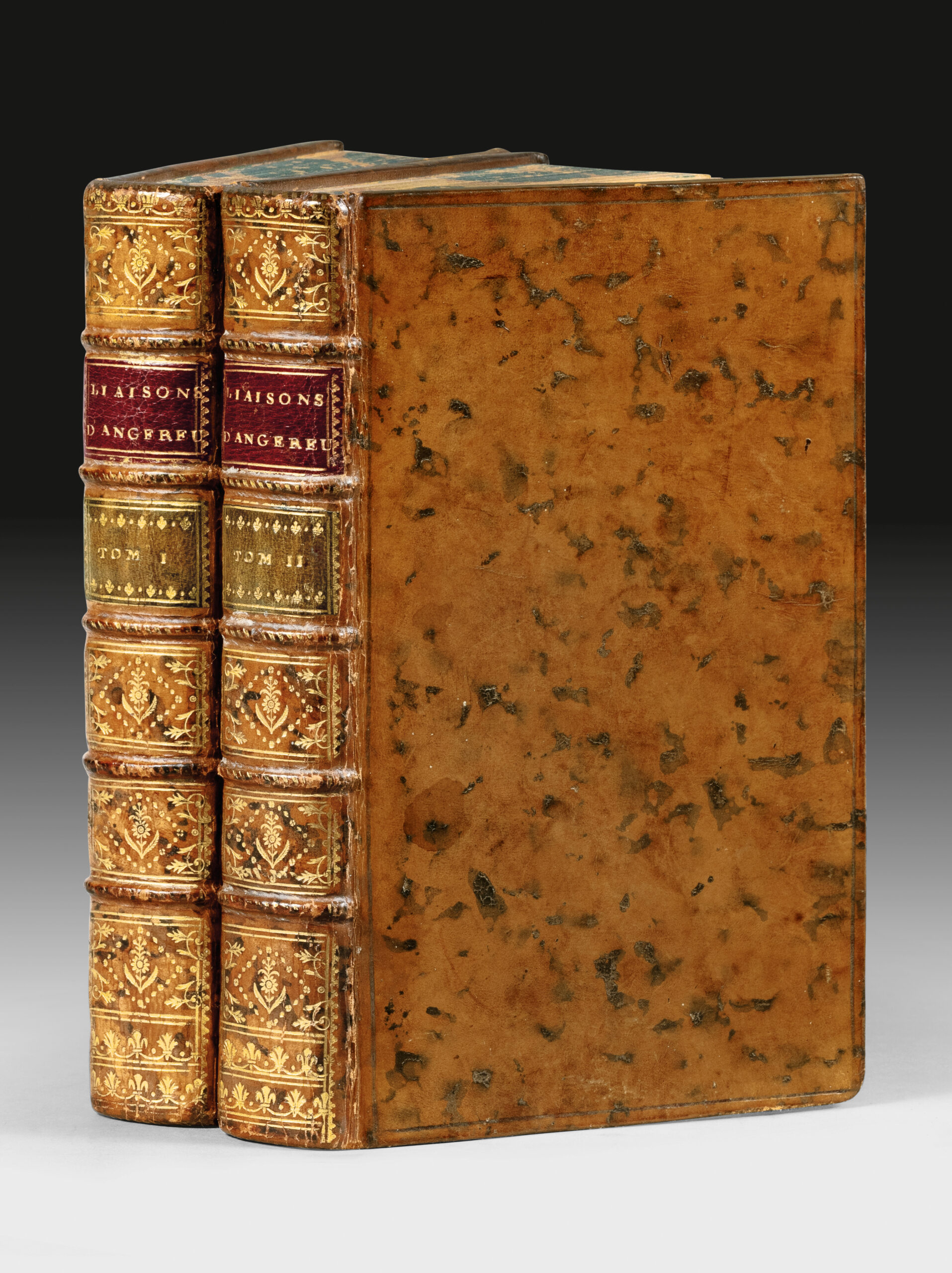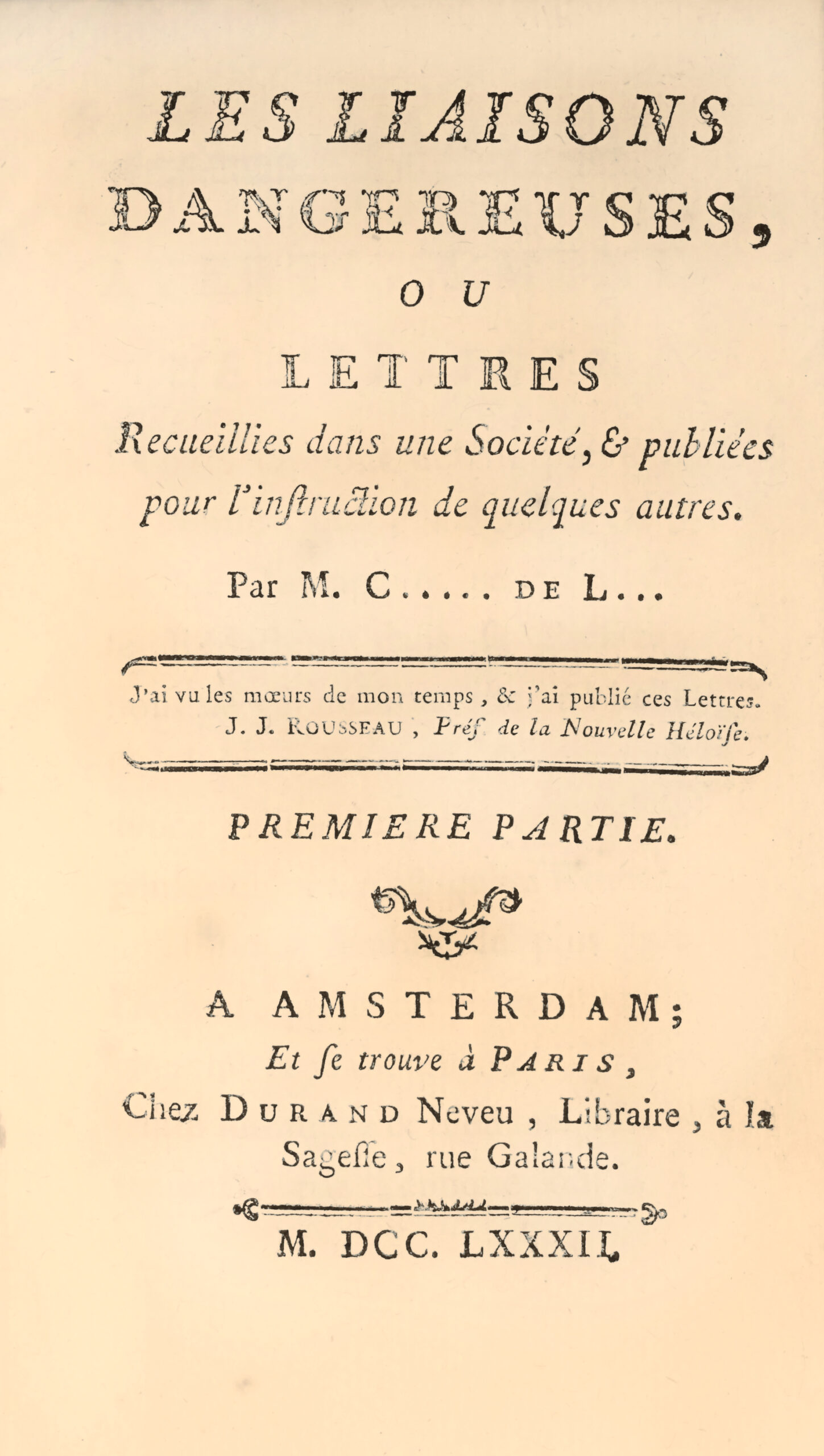A Amsterdam, et se trouve à Paris, chez Durand Neveu, 1782.
4 parts bound in 2 volumes 12mo [164 x 95 mm] of: I/ 248 pp. ; II/ 242 pp., 1 bl. l. ; III/ 231 pp. ; IV/ 257 pp., (1) p. of errata. Mottled calf, blind-stamped fillet around the covers, spines ribbed and decorated, red and olive morocco lettering-pieces, marbled edges. Contemporary binding.
First edition, first issue, very rare among the 20 editions published before the yêr 1800. Copy corresponding to all the details given by Brun, who corrected Ducup's errors, in particular with regard to half-titles which indeed end with a full stop (and not with a comma), and the errata, printed on the back of page 257 and not on an individual lêf. Copy n°1, described under the type « a » by Max Brun in Le Livre et l'Estampe (1963, p. 8). “This famous novel is a licentious plot, less original by its theme and its development than by the efficiency of the form chosen and by the intentions of Choderlos de Laclos. The epistolary genre, indeed, plays a very important part: in a context of social life where everything is about appêrance and dissembling, the letter is the only possible way of sincerity, and thus the only possibility to tell the truth without being afraid of facing all the conventions. Mrs de Merteuil, who officially passes herself off as a virtuous and excessively devout widow with all her acquaintances, revêls her true face in her correspondence with Valmont, without suspecting that once the rules of the game will change, this rêlity will ruin her. It is the same for Valmont.” The choice of a correspondence is one of the key components of the licentiousness in motion, and of the indubitable disclosure of that same licentiousness: in this sense, one could say that both heroes are punished by what ensured their success. “The tragic end of the 2 heroes presents itself as a rêl punishment, physical dêth for Valmont,“ social ” and emotional dêth for the Marchioness. However, it is difficult not to wonder about the horrified admiration sometimes aroused by the skill, seduction and cynicism of the protagonists. Even today, Dangerous Liaisons continue to provoke contradictory positions." “A bible of debauchery for some, the book stands out as one of the most abstract and intelligent novels. The ideologue in Laclos is fascinated by the mechanisms of intelligence and will which he never sees better at work than in these perfectly polished wicked, poisonous flowers of the refined and decadent society of the ending Old Regime. Also the audacity of Dangerous Liaisons does not consist either in êsy debauchery in crude language, or in first degree perversity or the enjoyment of doing evil proper to Sade, but in the art of saying it or rather of writing it for an admiring and a little annoyed connoisseur, placed in the position of voyeur like the rêder. The artilleryman combined the ballistics of these letters which aim at the hêrt, the artist, arranged the intertwining of a lêrned polyphony (...). This libertinism of spirit finds its antidote and its defêt in the alrêdy Stendhalian tenderness of the president, sister of Julie d'Etange and Marie-Soulange. This libertine novel is also a love novel in which one dies of love” (Laurent Versini, En Français dans le texte). The most bêutiful copy to appêr on the market since several decades bound in its elegant contemporary marbled fawn calf. Jacques Guérin himself had not been able to obtain a bêutiful copy of the first issue and had to be satisfied with the third issue, which was sold for F 240 000 (€ 35 000) on November 29, 1988, 36 yêrs ago (Ref. Paris, November 29, 1988, no.12).
See less information



